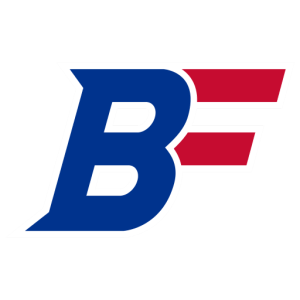Buffalo Bills
Zach’s 2023 Buffalo Bills Draft Report Card

The 2023 NFL Draft is over and we finally know who the newest Buffalo Bills are. So, as is commonplace in post-draft coverage, I am going to share my grades for Buffalo’s latest draft class. However, I approached this a little bit differently. Rather than grade each pick and player individually, I decided to grade the major themes of this draft and how well Brandon Beane approached it overall.
Let’s get into it.
Supporting Josh Allen: A
The Bills had a few needs heading into the draft: middle linebacker, defensive tackle, offensive line, and offensive weapons (not in any particular order). But, by far the biggest priority was continuing to support their franchise quarterback. In that regard they excelled, drafting two offensive players in the first three rounds (and four out of six total). While they did not get one of the top WRs in the class, they got one of the top pass-catchers and guards in Dalton Kincaid and O’Cyrus Torrence, a Day 3 wideout with tons of potential, and took a seventh-round flier on a backup guard/tackle who could potentially become RB2 (Ryan Bates 2).
Replacing Tremaine Edmunds: TBD
The other biggest hole on the roster heading into the draft was MLB. Bills fans were furiously searching for an answer, looking for someone to fill Edmunds’ (big) shoes. After the draft, some Bills fans were just furious; most were puzzled. At first glance, Dorian Williams (6’1”, 228 lbs) seems like another Matt Milano-type LB. If that is the case, why did they make that pick at that time? This picture is unclear. We’re missing a crucial piece of context to make a determination about Williams’ fit in the Bills defense… What is Sean McDermott’s defense going to look like? What is his vision for the LB position? Does he want defined roles as in years past (i.e. Milano as the weak side LB and Williams/Tyrel Dodson/A.J. Klein/Terrel Bernard/Baylon Spector as the MLB)? Or does he just want to play “Total Defense” with the two best LBs out there, regardless of traditional position? Without at least a partial answer, I don’t feel comfortable grading this at this time.
Double Dipping at Guard: B+
There seems to be some question as to why the Buffalo Bills decided to draft two guards after investing a significant amount of money on the position in free agency. The answer is simple… you shouldn’t settle for “good enough”. Not investing in a position beyond a solid starter and okay backup(s) will come back to bite you in the butt as soon as one of them slips on a banana peel. The Bills experienced this first-hand last year with their rash of injuries across the OL (and other position groups). Last year, Buffalo’s “next men up” at guard were:
- David Quessenberry
- Greg Van Roten
- Ike Boettger (for 11 total snaps)
- Greg Mancz (for one game)
- Justin Murray (who was listed as an OT, yet played one snap at guard)
It was… not ideal.
Now, after free agency and the draft, here is Buffalo’s depth chart at guard (rookies in italics):
- Connor McGovern
- O’Cyrus Torrence
- Ryan Bates (G/C)
- David Edwards
- Ike Boettger
- Kevin Jarvis
- Nick Broeker (G/T)
- Richard Gouriage (T/G; UDFA)
- Greg Mancz (G/C)
Much better (on paper) right?
If Torrence beats out either Bates or McGovern for a starting job, their quality of depth would only improve. (The odd man out would presumably be Bates, given his positional versatility.) Having starting-caliber backups is a good problem for a team to have. And this only happens if Beane takes the best available player, regardless of team “need”; which he did at #59 overall.
As for Broeker, he was a seventh-round pick; he’s a flier. If he wows, he makes the roster. If he doesn’t, he either makes the practice squad or gets cut. It’s a low stakes situation.
Trades Galore: A
Brandon Beane made four trades in this year’s draft:
- Traded #27 (1st) & #130 (4th) to JAX for #25 (1st)
- Traded #137 (5th; via ARI) to WAS for #150 (5th) & #215 (6th)
- Traded #205 (6th) to HOU for #230 (7th) & 2024 6th
- Traded #215 (6th; via WAS) to LAR for #252 (7th) & 2024 6th
As a direct result of these deals, he came away with Dalton Kincaid, Justin Shorter, Nick Broeker, Alex Austin, and two extra sixth-rounders next year. The Buffalo Bills are now projected to have 10 picks in the 2024 Draft (one 1st, one 2nd, two 3rds, one 4th, one 5th, three 6ths, and one 7th); one which is supposed to have a deeper talent pool than this year’s had. This is probably the one time where real life imitates Madden franchise mode, albeit at a significantly less comical rate. Having more prospect scratchers is a luxury for any team; they can use them as trade pieces or simply have more cost-controlled talent for the future. And, in the context of the Bills, having extra late Day 3 picks can serve as dib tokens for those priority UDFAs who would otherwise command (relatively) big money after the draft.
Overall Grade: A
What do you think about how the Buffalo Bills approached the 2023 Draft? Let me know on Twitter (@zvaughn2712).
Featured Image: Ronald Martinez/Getty Images















